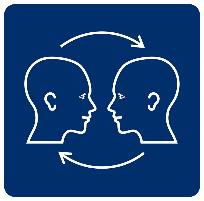The Psycholinguistics of Word Production Applied in AAC
Session
3.4
Tutorial
-
- Bruce Baker (University of Pittsburgh)
Funding / Sponsorship:
Videotaping funded by Semantic Compaction Systems, Inc.
Summary
Exploring how to understand any AAC approach can be aided by insight into the word/language production experience of typical populations. Numerous models of language generation, both serial and connectionist, have been designed and promoted. Such theories typically divide processes into distinctive areas from conceptualization/semantic, lexical/syntactic, phonologic/phonetic, and onto motoric models necessary for articulation. The process of traveling from the concept/preverbal message to the communicative act is discussed and shown to be virtually the same for oral and augmented speakers. These explorations should enhance the understanding teachers and clinicians have about AAC users’ language experiences.
Method/Activities/Techniques
The purpose of the presentation is to examine, speculate, and theorize about the internal linguistic elements of the experiential phenomena of two distinct populations: typical speakers and augmented speakers. Video interviews with augmented communicators are shown. The internal experiential dynamics of lexicon selection and syntax organization will be explored.
Results/Findings
The results of the findings can give teachers and clinicians insight into what’s going on in an AAC user’s mind when he/she is using a speech generating device (SGD).
Conclusions
The author and participants discuss the similarity between the processes two groups: augmented communicators and oral speakers.
Level of Session
General
Age Group
All Ages
Interest
Primary school
Secondary school
Special school
Further/Higher Ed.
Adult





